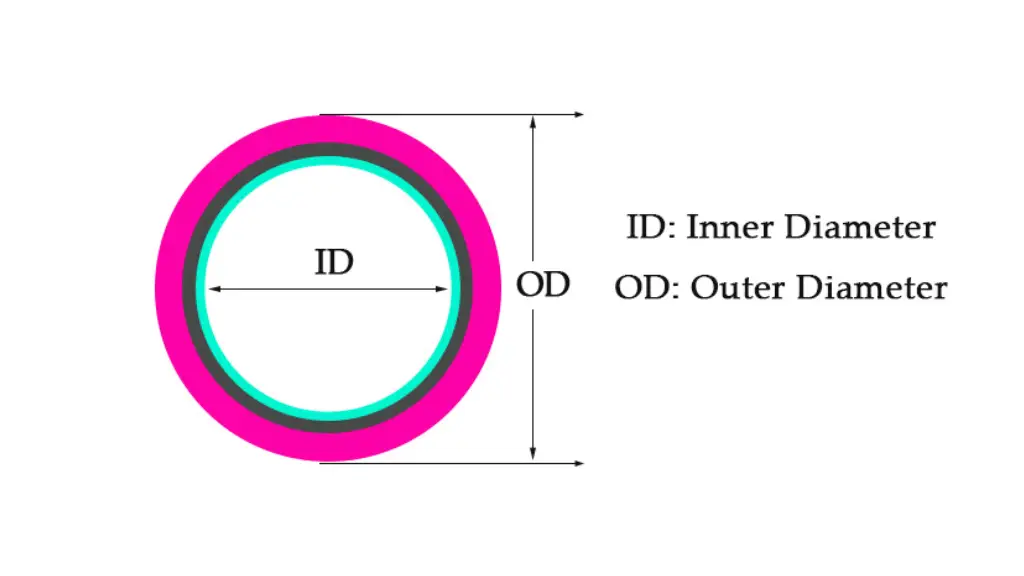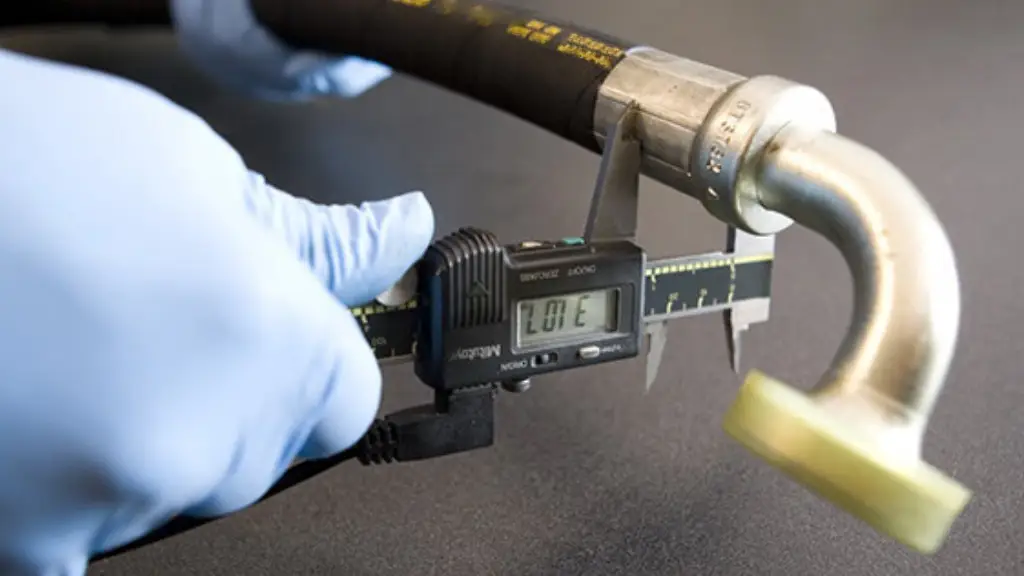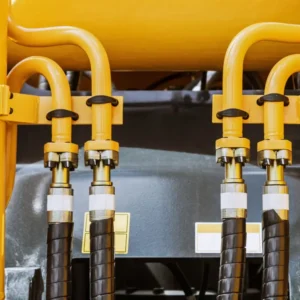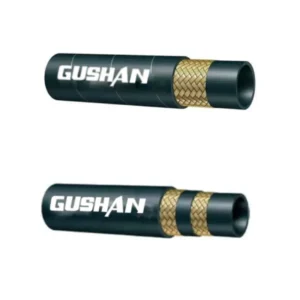Hydraulic hoses are the lifeblood of countless industrial and mobile equipment applications, transporting high-pressure fluids to power a wide range of operations. Among the critical factors influencing the performance and longevity of a hydraulic system, hydraulic hose diameter stands out as a paramount consideration.
This comprehensive guide delves into the intricacies of hydraulic hose diameter, one of the important hydraulic hose dimensions, exploring its significance, selection criteria, and best practices for optimal system performance. By understanding the nuances of hydraulic hose diameter, you can ensure the efficient and reliable operation of your hydraulic equipment.
What Is Hydraulic Hose Diameter
Hydraulic hose diameter refers to the internal diameter (ID) of a hydraulic hose, which determines the amount of fluid it can carry. It’s a crucial factor in hydraulic system design as it directly impacts flow rate, pressure, and overall system performance.
Key points to remember:
- Larger diameter: Higher flow rate, lower pressure drop.
- Smaller diameter: Lower flow rate, higher pressure.
- Incorrect diameter: Can lead to inefficiencies, reduced performance, and potential system damage.
Factors to consider when selecting hydraulic hose diameter:
- Flow rate: The volume of fluid required per unit of time.
- Pressure: The force exerted by the fluid on the system.
- Temperature: The operating temperature range of the fluid.
- Fluid compatibility: The type of fluid being used and its compatibility with the hose material.
- Hose length: The distance the fluid needs to travel.
By carefully considering these factors, you can select the appropriate hydraulic hose diameter to ensure optimal system performance.
Hydraulic Hose ID and OD

Hydraulic Hose ID and OD
In the world of hydraulics, understanding the terms “ID” and “OD” is crucial for selecting the right hose for your specific application.
- ID (Inner Diameter): This refers to the internal diameter of the hydraulic hose, which determines the flow rate of the hydraulic fluid. A larger ID allows for a higher flow rate.
- OD (Outer Diameter): This is the external diameter of the hydraulic hose, which influences factors like hose flexibility, weight, and the size of fittings required.
Why is it important to know the ID and OD?
- Correct Fitting Selection: The OD determines the size of the fittings needed to connect the hose to other components in the hydraulic system.
- Flow Rate Calculation: The ID directly impacts the flow rate of the fluid, ensuring optimal system performance.
- Pressure Rating: The hose’s construction, including its ID and OD, influences its pressure rating.
- Hose Routing: The OD affects the hose’s flexibility and how it can be routed within the system.
How to Measure ID and OD:
- Use a Vernier Caliper: This precision tool can accurately measure both the inner and outer diameters of the hose.
- Consult Manufacturer‘s Specifications: The manufacturer‘s data sheet will provide the exact ID and OD measurements for a specific hose type and hydraulic hose sizes.
By understanding the significance of ID and OD, you can select the appropriate hydraulic hose to ensure efficient and reliable operation of your hydraulic system.
How to Measure Hydraulic Hose Diameter

Understanding the Importance of Accurate Measurement
Accurate measurement of a hydraulic hose’s inner diameter (ID) and outer diameter (OD) is crucial for several reasons:
- Correct Fitting Selection: The OD determines the size of the fittings required to connect the hose to other components in the hydraulic system.
- Flow Rate Calculation: The ID directly impacts the flow rate of the fluid, ensuring optimal system performance.
- Pressure Rating: The hose’s construction, including its ID and OD, influences its pressure rating.
- Hose Routing: The OD affects the hose’s flexibility and how it can be routed within the system.
Methods for Measuring Hydraulic Hose Diameter
Vernier Caliper:
- Direct Measurement: This is the most common and accurate method.
- Steps:
- Clean the Hose: Ensure the hose surface is clean and free of dirt or debris.
- Measure the OD: Place the caliper jaws on the outer surface of the hose and tighten the caliper.
- Measure the ID: Insert the caliper’s jaws into the hose’s opening and measure the inner diameter.
Micrometer:
- High Precision: For extremely precise measurements, a micrometer can be used.
- Steps:
- Clean the Hose: As with the caliper, ensure the hose is clean.
- Measure the OD and ID: Use the micrometer’s anvil and spindle to measure the outer and inner diameters.
Hose ID Gauge:
- Specialized Tool: A hose ID gauge is a tool designed specifically for measuring the inner diameter of hoses.
- Usage: Insert the gauge into the hose and read the measurement directly from the tool.
Additional Considerations:
- Hose Material: The material of the hose can affect measurement accuracy, especially when using caliper or micrometer methods.
- Hose Condition: If the hose is worn or damaged, the measurements may not be accurate.
- Manufacturer‘s Specifications: Always refer to the manufacturer‘s specifications for the exact ID and OD of a particular hose type and size.
By following these methods and considering the factors mentioned above, you can accurately measure the diameter of your hydraulic hose and ensure optimal performance of your hydraulic system.
Do you have any other questions about hydraulic hose measurement or selection?
How to Choose the Right Diameter of Hydraulic Hose: ID & OD
Selecting the correct diameter for your hydraulic hose is crucial for optimal system performance and longevity. The two primary measurements to consider are the Inner Diameter (ID) and Outer Diameter (OD).
Factors Affecting Diameter Selection
Flow Rate:
- Higher flow rates require larger ID hoses to prevent excessive pressure drops and heat generation.
- Lower flow rates can be accommodated by smaller ID hoses.
Pressure:
- Higher pressure applications demand hoses with thicker walls and potentially larger ODs to withstand the increased force.
- Lower pressure systems can use thinner-walled hoses.
Temperature:
- Extreme temperatures can affect the hose material and its ability to maintain its shape and performance.
- Choose a hose with a temperature rating suitable for your application.
Fluid Compatibility:
- The fluid’s chemical properties can impact the hose material.
- Ensure the hose is compatible with the fluid to prevent degradation and leaks.
Hose Length:
- Longer hoses may experience higher pressure drops due to friction.
- Consider using a larger ID hose to compensate for pressure loss.
Tips for Selecting the Right Diameter
- Consult Manufacturer‘s Specifications: Refer to the manufacturer‘s data sheets for specific recommendations based on your application.
- Use a Flow Nomograph: This tool helps you determine the appropriate ID based on flow rate and pressure requirements.9
- Consider Future Needs: Allow for potential future increases in flow rate or pressure when selecting the hose diameter.
- Consult with a Hydraulic Expert: If you’re unsure, seek advice from a hydraulic specialist to ensure the correct hose selection.
Common Mistakes to Avoid
- Undersizing: Can lead to excessive pressure drops, reduced flow rate, and premature hose failure.
- Oversizing: May result in unnecessary costs and potential issues with hose routing and fitting compatibility.
By carefully considering these factors and following the guidelines above, you can select the right hydraulic hose diameter to ensure optimal system performance and longevity.
Conclusion
Selecting the right hydraulic hose diameter is crucial for the optimal performance and longevity of your hydraulic system. By carefully considering factors such as flow rate, pressure, temperature, and fluid compatibility, you can ensure efficient and reliable operation.
Ready to upgrade your hydraulic system with high-quality, bulk hydraulic hoses?
We offer a wide range of hydraulic hoses to meet your specific needs. Our expert team can help you select the perfect hose for your application.
Contact us today to learn more and get a quote.
Gushan rubber: Your trusted partner for hydraulic solutions.



